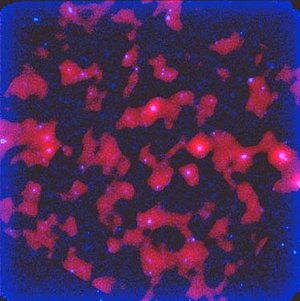Accept all cookies Accept only essential cookies See our Cookie Notice

About ESA
The European Space Agency (ESA) is Europe’s gateway to space. Its mission is to shape the development of Europe’s space capability and ensure that investment in space continues to deliver benefits to the citizens of Europe and the world.
Highlights
ESA - United space in Europe
This is ESA ESA facts Member States & Cooperating States Funding Director General Top management For Member State Delegations European vision European Space Policy ESA & EU Space Councils Responsibility & Sustainability Annual Report Calendar of meetings Corporate newsEstablishments & sites
ESA Headquarters ESA ESTEC ESA ESOC ESA ESRIN ESA EAC ESA ESAC Europe's Spaceport ESA ESEC ESA ECSAT Brussels Office Washington OfficeWorking with ESA
Business with ESA ESA Commercialisation Gateway Law at ESA Careers Cyber resilience at ESA IT at ESA Newsroom Partnerships Merchandising Licence Education Open Space Innovation Platform Integrity and Reporting Administrative Tribunal Health and SafetyMore about ESA
History ESA Historical Archives Exhibitions Publications Art & Culture ESA Merchandise Kids Diversity ESA Brand Centre ESA ChampionsLatest
Space in Member States
Find out more about space activities in our 23 Member States, and understand how ESA works together with their national agencies, institutions and organisations.
Science & Exploration
Exploring our Solar System and unlocking the secrets of the Universe
Go to topicAstronauts
Missions
Juice Euclid Webb Solar Orbiter BepiColombo Gaia ExoMars Cheops Exoplanet missions More missionsActivities
International Space Station Orion service module Gateway Concordia Caves & Pangaea BenefitsLatest
Space Safety
Protecting life and infrastructure on Earth and in orbit
Go to topicAsteroids
Asteroids and Planetary Defence Asteroid danger explained Flyeye telescope: asteroid detection Hera mission: asteroid deflection Near-Earth Object Coordination CentreSpace junk
About space debris Space debris by the numbers Space Environment Report In space refuelling, refurbishing and removingSafety from space
Clean Space ecodesign Zero Debris Technologies Space for Earth Supporting Sustainable DevelopmentLatest
Applications
Using space to benefit citizens and meet future challenges on Earth
Go to topicObserving the Earth
Observing the Earth Future EO Copernicus Meteorology Space for our climate Satellite missionsCommercialisation
ESA Commercialisation Gateway Open Space Innovation Platform Business Incubation ESA Space SolutionsLatest
Enabling & Support
Making space accessible and developing the technologies for the future
Go to topicBuilding missions
Space Engineering and Technology Test centre Laboratories Concurrent Design Facility Preparing for the future Shaping the Future Discovery and Preparation Advanced Concepts TeamSpace transportation
Space Transportation Ariane Vega Space Rider Future space transportation Boost! Europe's Spaceport Launches from Europe's Spaceport from 2012Latest

ISO search for early galaxies
Thank you for liking
You have already liked this page, you can only like it once!
Through two windows on the early Universe, in opposite directions in the sky, ESA's Infrared Space Observatory (ISO) detects remote galaxies glowing in infrared light. ISO's ISOCAM camera stared for hours at regions known to be clear of obscuring clouds of gas and dust. Some objects recorded here date from when the Universe was a third of its present age. In the left image, ISOCAM results are superimposed on a Hubble Space Telescope image. Twenty galaxies conspicuous at an infrared wavelength of 15 microns are likely to be experiencing starbursts. Seven objects that reveal themselves only at 7 microns are elliptical galaxies, showing up in the infrared because of the redshift. Beyond the edges of the Hubble image, ISOCAM has registered another 26 distant galaxies, six of which are still undetected by visible light. The right image shows the southern deep field as observed by ISOCAM at 15 microns. Astronomers consider 22 to 30 objects to be distant galaxies. As in the northern field, many are expected to be starbursts. Hubble has not yet looked through this window, but the 4-m telescope at CTIO, Chile, has done so, and one ISO object (arrowed here) is so far unseen in visible light. This object is likely to be undergoing an especially violent period of star formation. [Image Date: 1998/04] [98.04.006-002]
-
CREDIT
Northern field: visible light, NASA/ESA/HST and R. Williams & HDF team; infrared, ESA/ISO/ISOCAM/ICSTM, CEA Saclay and H. Aussel et al; Southern field: ESA/ISO/ISOCAM and M. Rowan Robinson (ICSTM London) et al. -
LICENCE
ESA Standard Licence

ISO image of spiral galaxy M83

ISO view of the galactic plane

ISO observes starburst galaxies

ISO first light image















 Germany
Germany
 Austria
Austria
 Belgium
Belgium
 Denmark
Denmark
 Spain
Spain
 Estonia
Estonia
 Finland
Finland
 France
France
 Greece
Greece
 Hungary
Hungary
 Ireland
Ireland
 Italy
Italy
 Luxembourg
Luxembourg
 Norway
Norway
 The Netherlands
The Netherlands
 Poland
Poland
 Portugal
Portugal
 Czechia
Czechia
 Romania
Romania
 United Kingdom
United Kingdom
 Slovenia
Slovenia
 Sweden
Sweden
 Switzerland
Switzerland

























